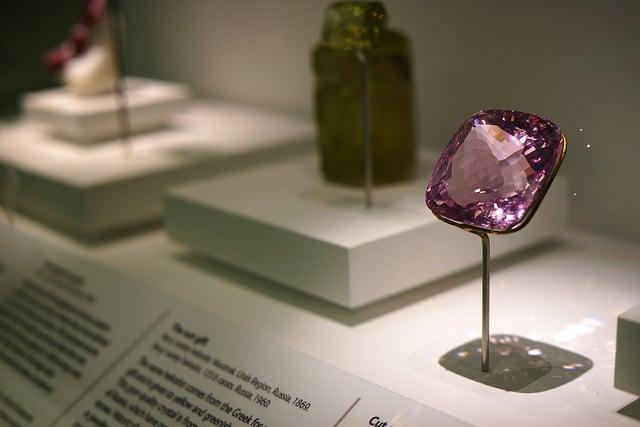What Does the GIA Colored Gem Grading Code Mean?
The GIA grading system describes gem color in terms of hue, tone, and saturation. Learn what the abbreviations and numbers of this gem grading code signify.
2 Minute Read
Answer: Those letters and numbers are a gem grading code for describing colors. It's part of the Gemological Institute of America's (GIA) grading system for colored gemstones. Jewelers and gemologists use it frequently.
Breaking Down Colors: Hue, Tone, and Saturation
This system breaks down gem color into three components:
- Hue reflects the basic colors we see. When most people discuss "color," they're actually referring to hue.
- Tone refers to a gem's relative lightness or darkness.
- Saturation refers to the hue's intensity.
Hue Abbreviations
In the GIA system, the basic hues are red (R), orange (O), yellow (Y), green (G), blue (B), violet (V), and purple (P).
Note that brown, white, and black aren't considered hues. Tone and saturation describe these.
For colors that combine hues, we express the primary hue last and the modifier first. So, greenish yellow is a hue with more yellow than green. Yellowish green is a hue with more green than yellow. We express even blends with a hyphen, like yellow-green.
When describing gem values in reports, gemologists use the abbreviations and capitalize the primary color. Lowercase is used for all other letters. So, "gY" means greenish yellow.
You'll also see additional modifiers, such as "sl" for slightly and "st" for strongly.
Going back to the morganite example, "slpR" means slightly purplish red.
Tone Values
The first number in the color gem grading code represents the tone of the gem. The value can range from 0, colorless or white, to 10, black. This number reflects the relative brightness or darkness of the gem when viewed through the table. This is the large, horizontal facet at the top of the gem that acts like a window into it.
So, a morganite graded "slpR 3/4" has a tone of 3, a light tone.
Saturation Values
The second number in the color gem grading code stands for the saturation, or intensity, of the gem's hue. This value can range from 1 to 6. However, unlike tone, the meaning of this value differs somewhat depending on the hues. Warm hues, such as red, orange, and yellow, become shades of brown as their saturation decreases. Cool hues, like blue and violet, become progressively more gray as their saturation decreases.
- Saturation terms for warm colors: 1 = Brownish, 2 = Slightly Brownish, 3 = Very Slightly Brownish, 4 = Moderately Strong, 5 = Strong, 6 = Vivid.
- Saturation terms for cool colors: 1 = Grayish, 2 = Slightly Grayish, 3 = Very Slightly Grayish, 4 = Moderately Strong, 5 = Strong, 6 = Vivid.
Vivid levels of saturation are rare. However, they're more likely to be found in exceptional specimens of rubies, sapphires, and paraíba tourmalines.
Thus, a morganite graded "slpR 3/4" has a saturation of 4, moderately strong. As a primarily red stone, you'd use the warm color descriptions. At this saturation level, however, it makes no difference.
International Gem Society
Related Articles
Is Golden Beryl a Good Gem Choice for Jewelry?
Are There Color Change Diamonds?
Should I Make an Investment in Bargain Rubies?
Is Xinjiang Nephrite Banned in the US?
Latest Articles
Milarite Value, Price, and Jewelry Information
Appraising Pearls: How to Grade Pearls
Agate Buying Guide
Carving Techniques for Handling Inclusions in Transparent Gems
Never Stop Learning
When you join the IGS community, you get trusted diamond & gemstone information when you need it.
Get Gemology Insights
Get started with the International Gem Society’s free guide to gemstone identification. Join our weekly newsletter & get a free copy of the Gem ID Checklist!
